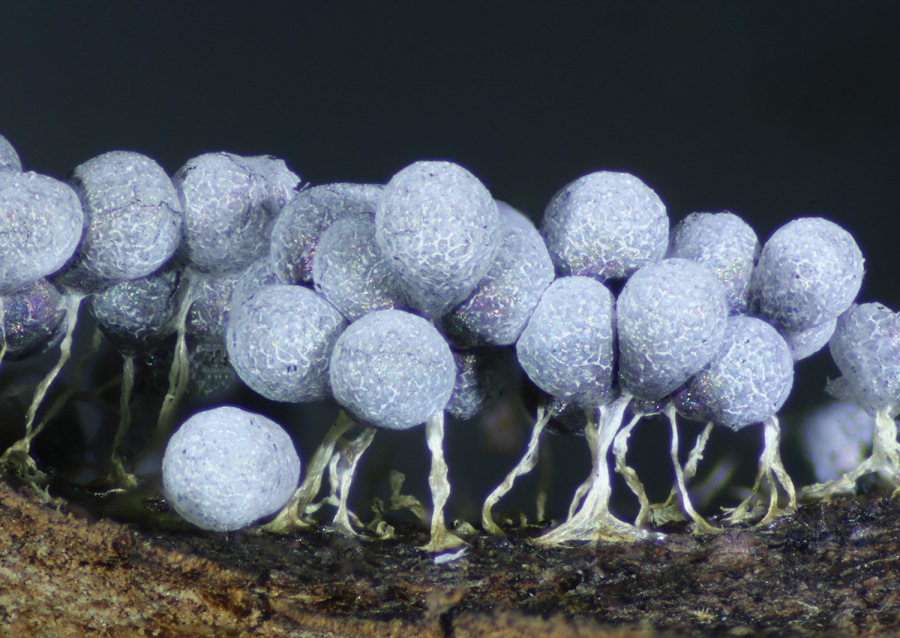
On 30 June 2018 I went for my regular afternoon walk to search for slime moulds. As I approached a leaning dead eucalypt that I regularly search (usually unsuccessfully) for myxomycetes, I noticed a bright yellow plasmodium glowing in the afternoon sun. It was about one meter from the ground and creeping up a standing dead Bedfordia salicina (known locally as blanketleaf), a medium-sized understorey tree in the Asteraceae family common in Tasmania’s wet forests.
I took several photos of the fan-shaped front edge of the plasmodium which covered the southern side of the 15 cm diameter tree, and a couple more images that show the network of thick plasmodial veins that criss-crossed one of several patches of a copper-coloured, pored resupinate fungus on the Bedfordia. And, because the Bedfordia is only several hundred meters from home, I continued watching and photographing the plasmodium at least once a day until its last hurrah at the end of July.
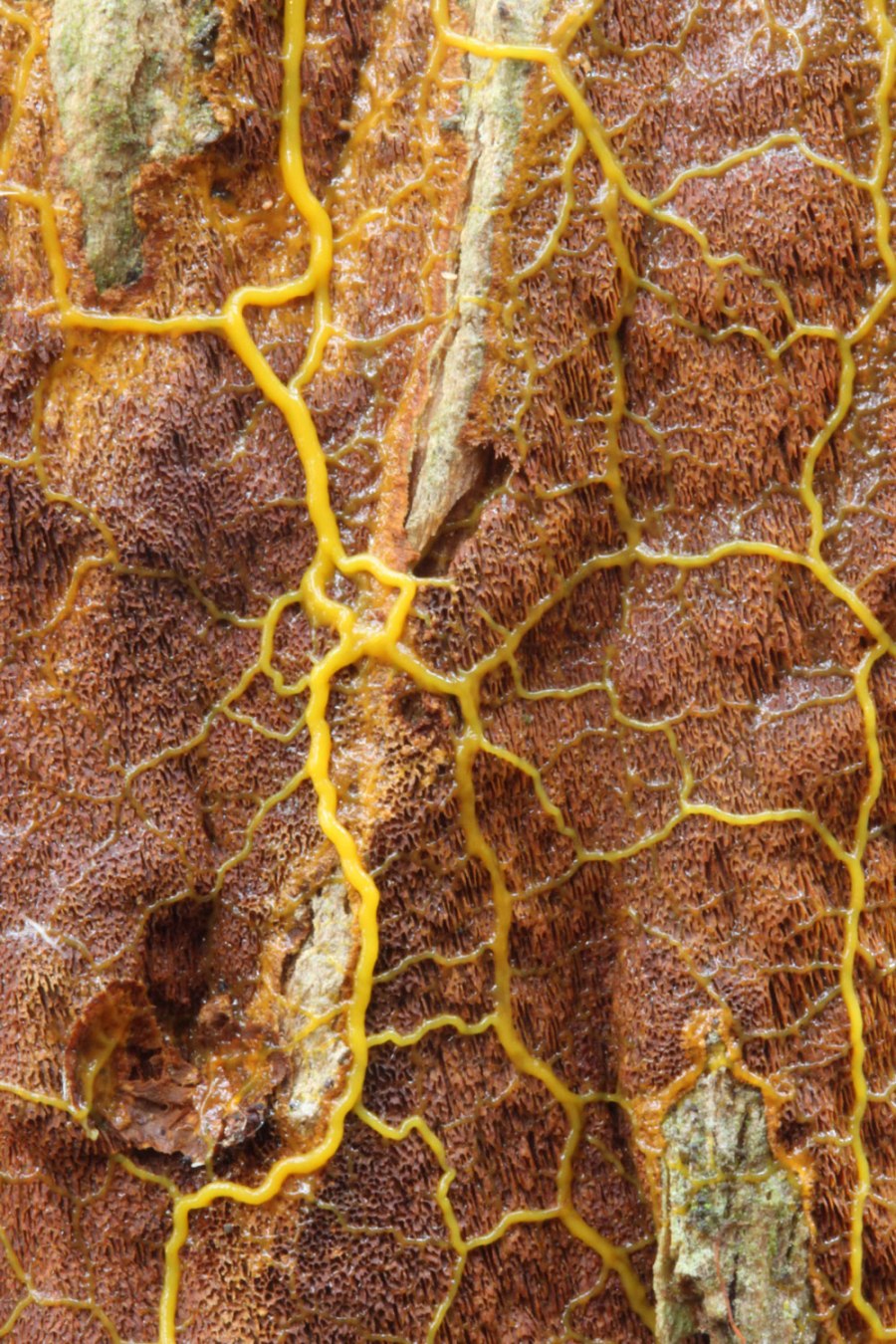
The weather in July was typical of mid-winter in Tasmania. There were days of rain at the beginning of the month, a week of cold mornings with frost on the ground in exposed areas, followed by intermittent rainy weather until the end of the month. The plasmodium waxed and waned depending on these conditions. After rainy periods the fan-shaped plasmodium spread out across the tree trunk, and the thick yellow veins made their way to the other patches of fungus. During the week of cold frosty weather the plasmodium contracted and darkened as it started forming a sclerotium. The next bout of wet weather got it going again—but not quite as I was expecting given the pattern of behaviour in the previous weeks.
A very small part of the plasmodium started to move (just visible on the left side of the photos 12, 13 and 15 July above), but a large part of the sclerotium started to form fruiting bodies which gradually matured over the following days.
It was interesting to observe that active plasmodial veins were visible under the forming sporangia (see photos above) and that more of the plasmodium was heading ever higher up the trunk. Another part of the plasmodium, a thick fan-shaped section, was concentrated on another patch of fungus about 20 cm above the fruiting bodies.
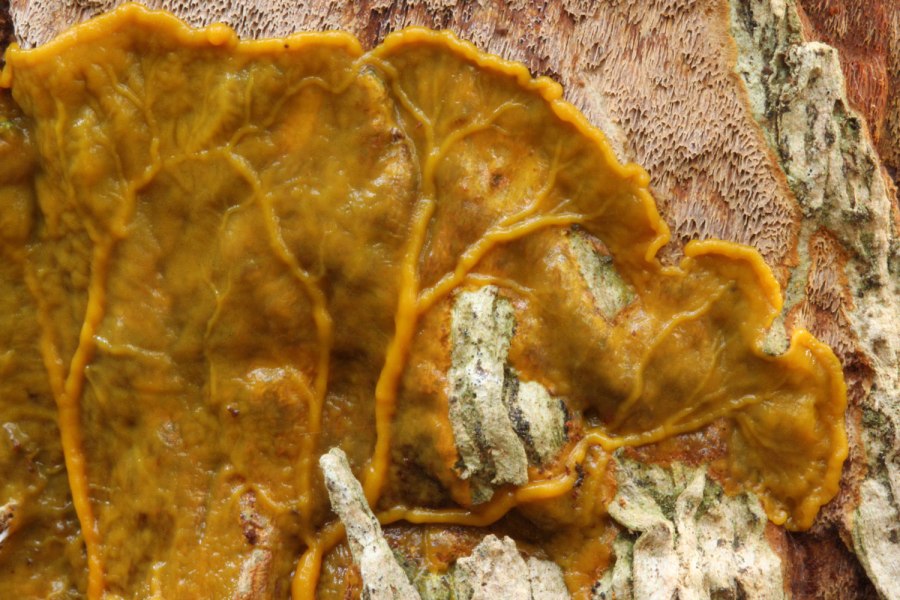
After watching the plasmodium for a couple of weeks, I was fairly sure the species was Badhamia utricularis, a species known to feed on fungi. It is particularly vigorous, especially in wet weather, and while elsewhere in the forest tiny patches of emerging Physarum viride were washed away by rain, the plasmodium I was watching absorbed the water and thrived.
The changeable weather and corresponding changing shape of the plasmodium continued, so by 28 July after yet more overnight rain I was expecting the plasmodium to behave as before and remain active. Much to my surprise, on the morning of 28 July, more sporangia had started to form about 20 cm above the first lot of (now mature) sporangia and this time it was clear that all the remaining plasmodium had concentrated to form these fruiting bodies. There were no indications of the active plasmodium anywhere on the tree.
More rain fell as the sporangia were maturing but most fruiting bodies were reasonably protected because of the deep fissures in the bark that channeled away the water. However, because of a bend in the tree, the darker group of sporangia in the photo below experienced constant drips of water as they were maturing. This washed away some of the white calcium carbonate deposited on the peridium, and exposed the underlying membrane with its range of purple, pink and blue iridescent colours.
POSTSCRIPT: During a morning walk on 6 August 2018 I noticed recently emerged Badhamia utricularis on a fallen, moss-covered Bedfordia about 10 meters from the standing dead tree mentioned above. This species has been collected four times already in 2018 from various logs further along ‘big tree’ track. As with some other species, it is very common in some years and seldom seen or absent in others.
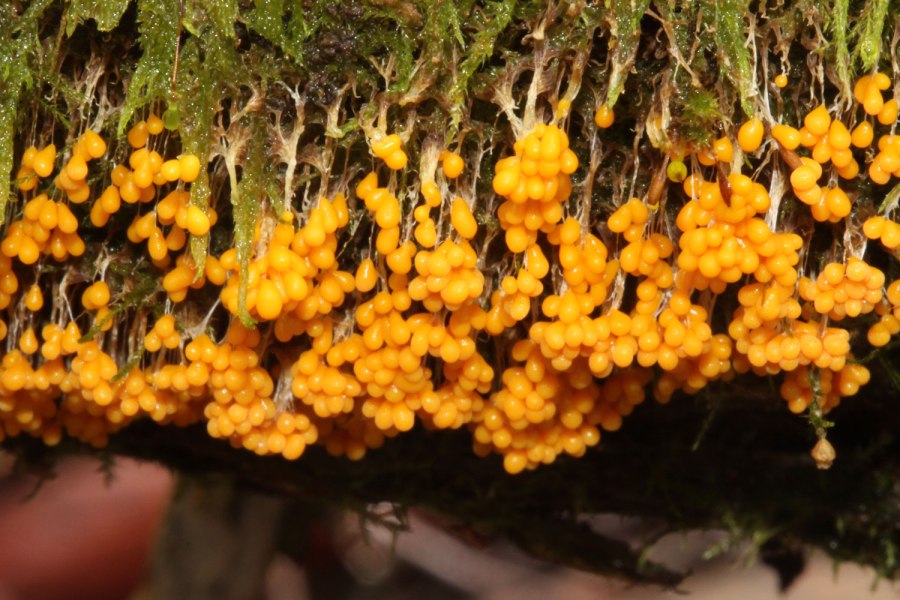

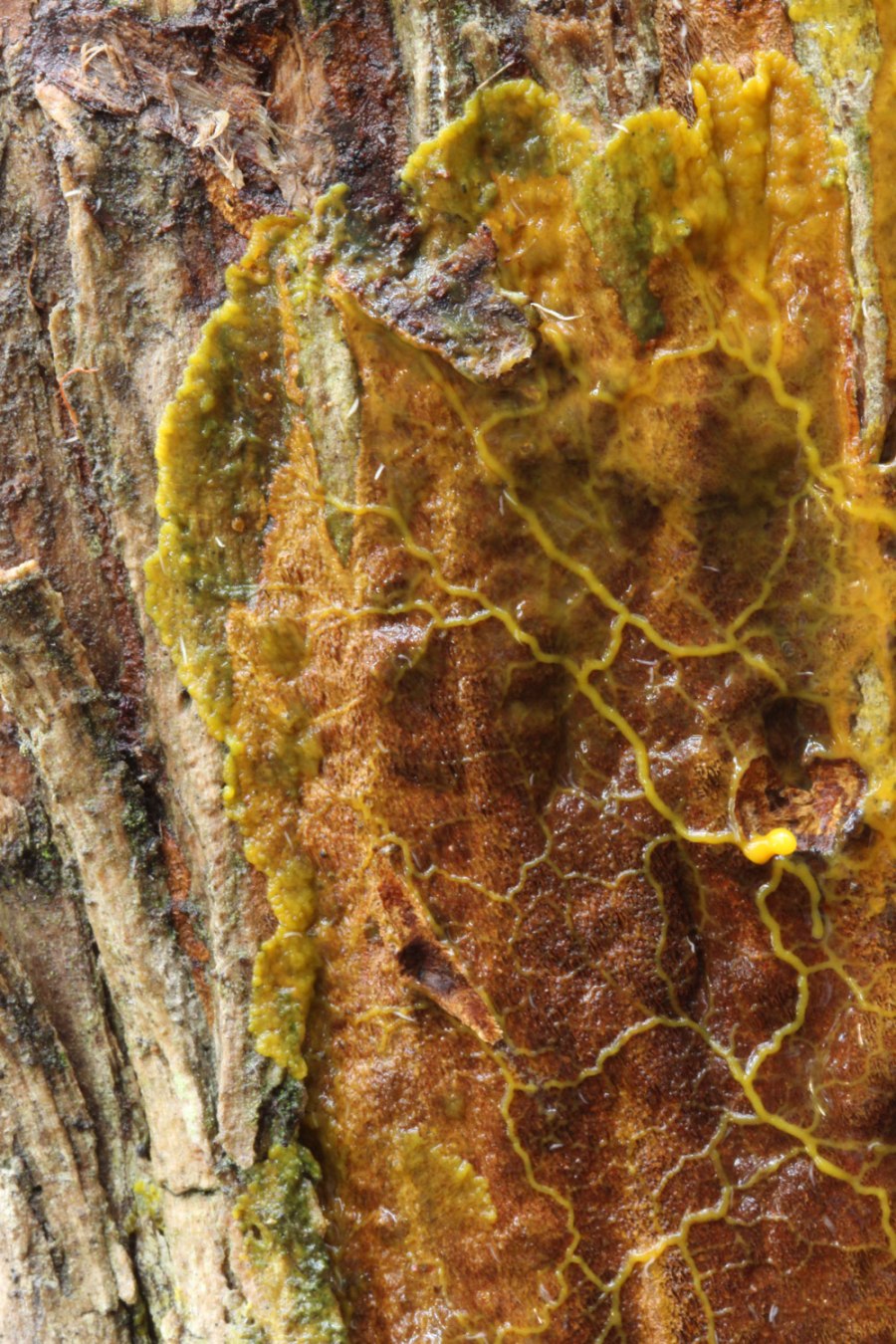









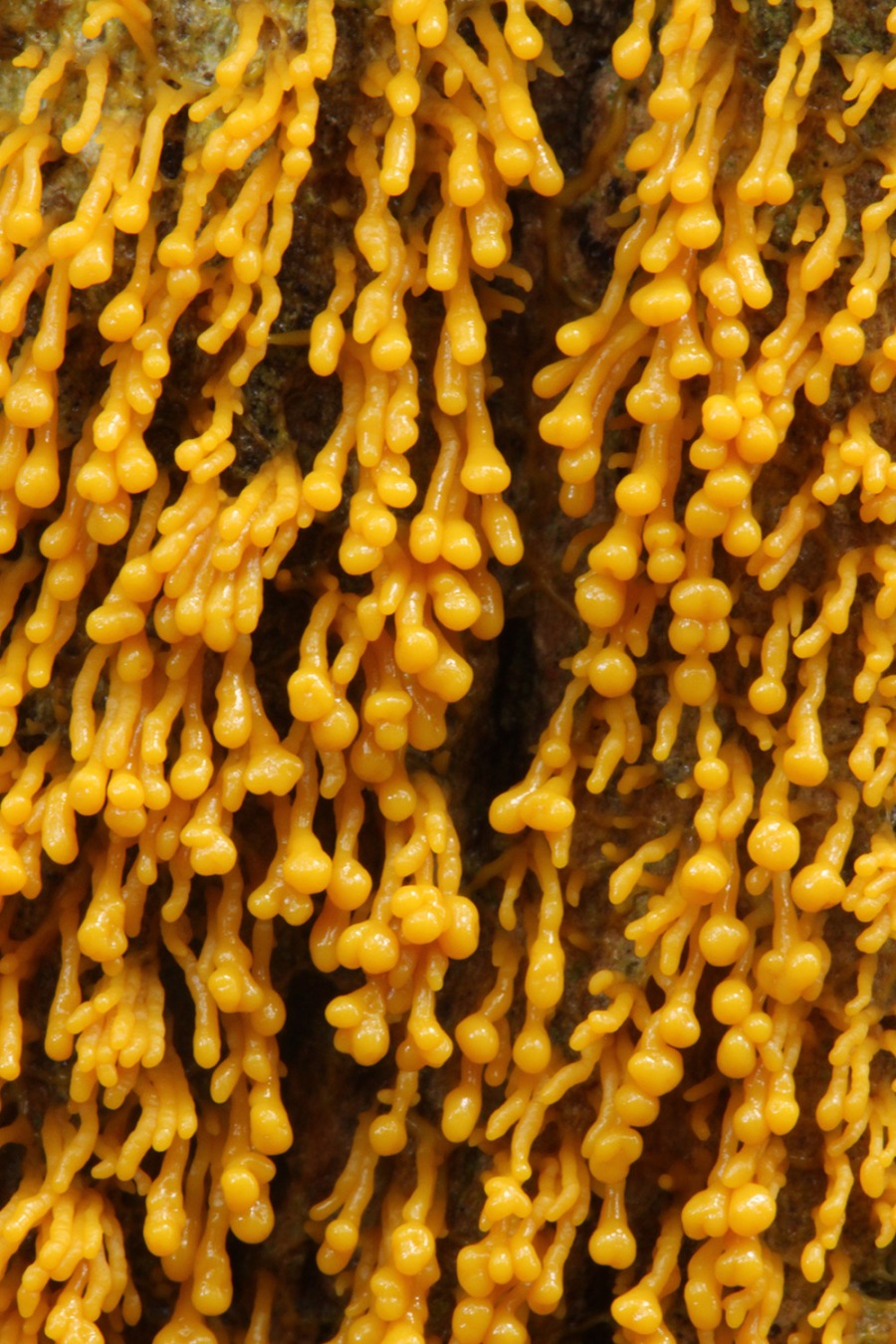

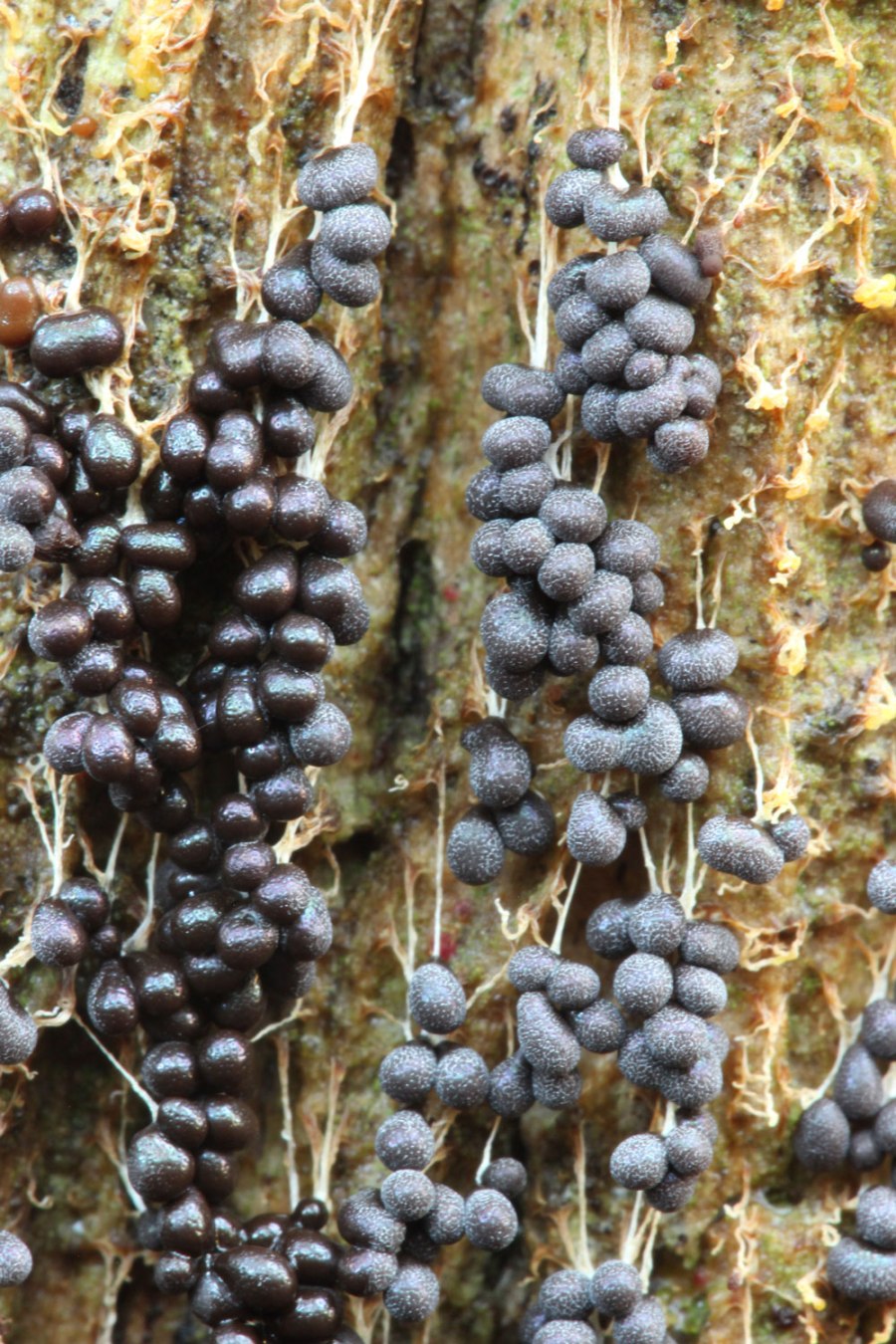
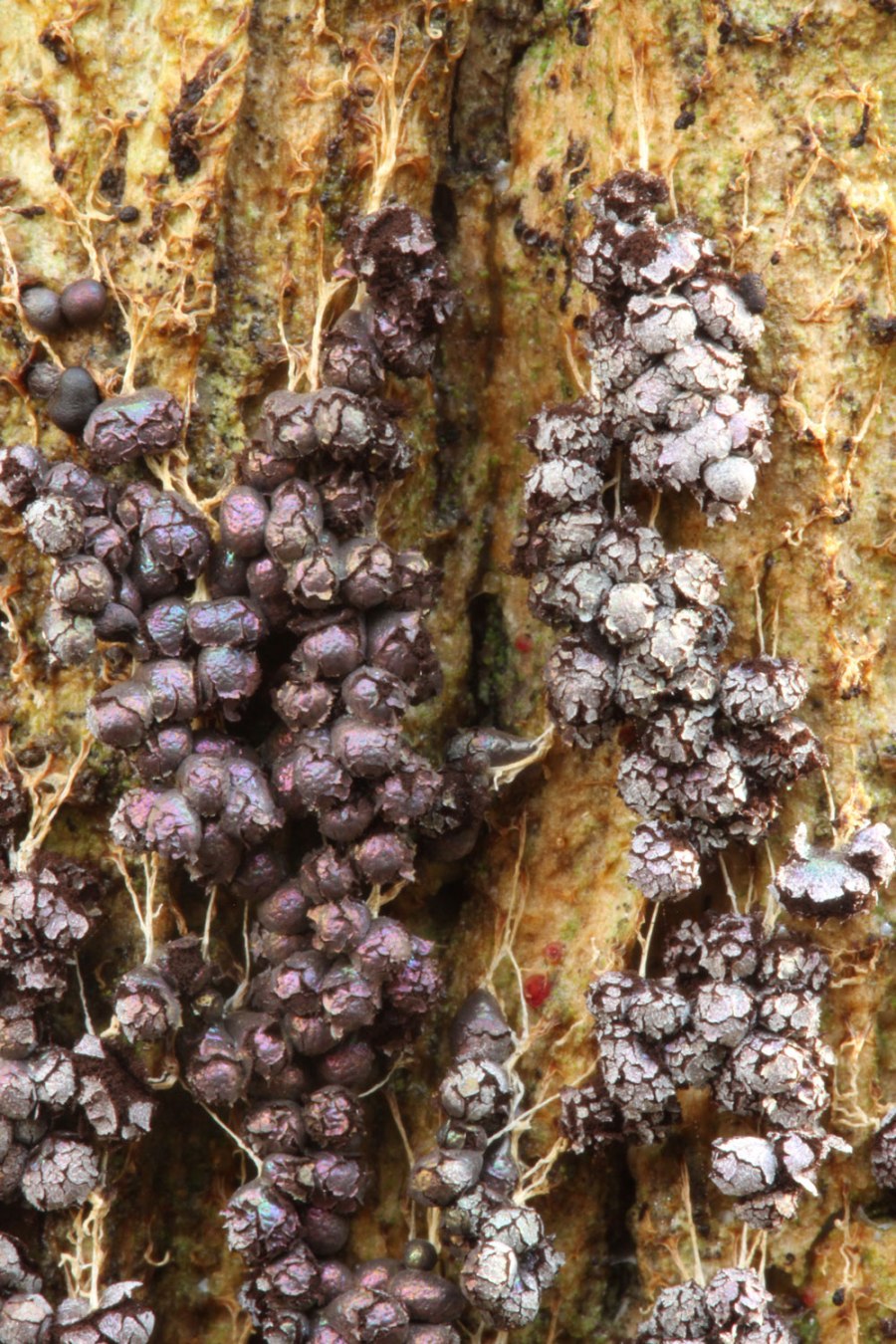
Fantastic! I found this post today as I was searching for information regarding a bright yellow plasmodium that I found on Trametes versicolor. I brought it home and have photographed the plasmodium, over a few days, as it has moved from one T. versicolor bracket, across a damp facial tissue, and onto another T. versicolor bracket. I will eventually upload to iNat if I can get a handle on the myxo species….to be determined. I enjoyed this time line with photographs read!
LikeLike
Thanks! Sounds like your plasmodium could be Badhamia utricularis, especially as it’s on Trametes. I hope you have success with it forming fruiting bodies!
LikeLike